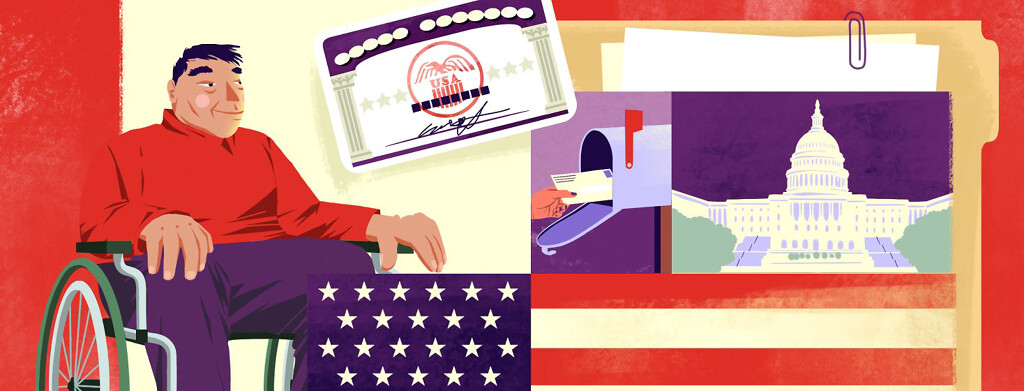Applying for Social Security Disability Benefits
Living with a long-term (chronic) health condition like NMO may make working impossible at some point. The symptoms from your condition can impact your ability to get your job done.
When this happens, you may find yourself needing to apply for disability benefits. The federal government offers 3 kinds of disability benefits to help support people living with disabilities:1,2
- Social Security Disability Insurance (SSDI) is for people who have worked a certain amount of time. The amount you receive is based on your disability and income earned during your working years.
- Supplemental Security Income (SSI) is for people who have not worked long enough to qualify for SSDI. It is based on age, income, assets, and disability.
- Medical vocational allowance is for people who do not meet SSDI or SSI requirements but are still severely disabled and unable to work.
It may be possible to qualify for both SSDI and SSI at the same time.1
How to qualify for disability benefits
Disability benefits are funded through Social Security taxes. These are taken out of your paycheck under “Social Security tax withheld.” There are several guidelines you must meet to be able to apply for SSDI, including:3
- Cannot earn more than $1,310 a month (in 2021)
- Have not been able to work for the last 12 months
- Earned at least 40 credits (you get 1 credit for every 3 months of work)
- Worked 5 of the last 10 years
Younger adults who have not had a chance to work for long may not have to meet some of these conditions. Children may also qualify for disability benefits.3
Applying for SSDI
Unfortunately, both the legal and medical systems can be complicated. The important thing to know is that applying for disability benefits is a process. The legal and medical systems have to define your condition as disabling for you to get the benefits.4
The Social Security Administration (SSA) publishes the Blue Book. The Blue Book lists many types of illness and the conditions that must be met to qualify for disability benefits. For example, cancers, heart failure, and cystic fibrosis all have different lists of what qualifies as a disability.4
After you apply, the SSA will get your medical records from your doctor. An SSA doctor will review your records to figure out your condition’s limitations on your daily life and your ability to work. You may need to supply experts and witnesses who can testify on your behalf.4
Understanding and appealing an SSDI denial
Once the SSA has decided on your application, it will send you a letter in the mail letting you know whether the application was approved or denied. This process can take some time. Eight out of 10 people are denied disability after their first and second applications.5
If the SSA denies your application for disability benefits, you can ask for an appeal. In most cases, you have 60 days after being denied to request an appeal. There are 4 appeals levels:6
- Reconsideration: This is when someone who did not decide on your request for benefits the first time reviews your claim.
- Hearing: An administrative law judge who has had no part in deciding your application leads a hearing about your case.
- Appeals Council review: This council looks at all review requests but may turn yours down if it thinks Social Security laws and regulations support the earlier decision. The appeals council can review your case itself or send it back to an administrative law judge.
- Federal Court review: You can file a civil suit in federal district court if you disagree with the appeals council decision or it chooses not to review your case.
You can ask for an appeal online, at your local Social Security office, or by calling the SSA’s toll-free number at 1-800-772-1213 (TTY 1-800-325-0778). You may want to consider hiring a lawyer or working with a legal aid service to help you with your appeal.

Join the conversation